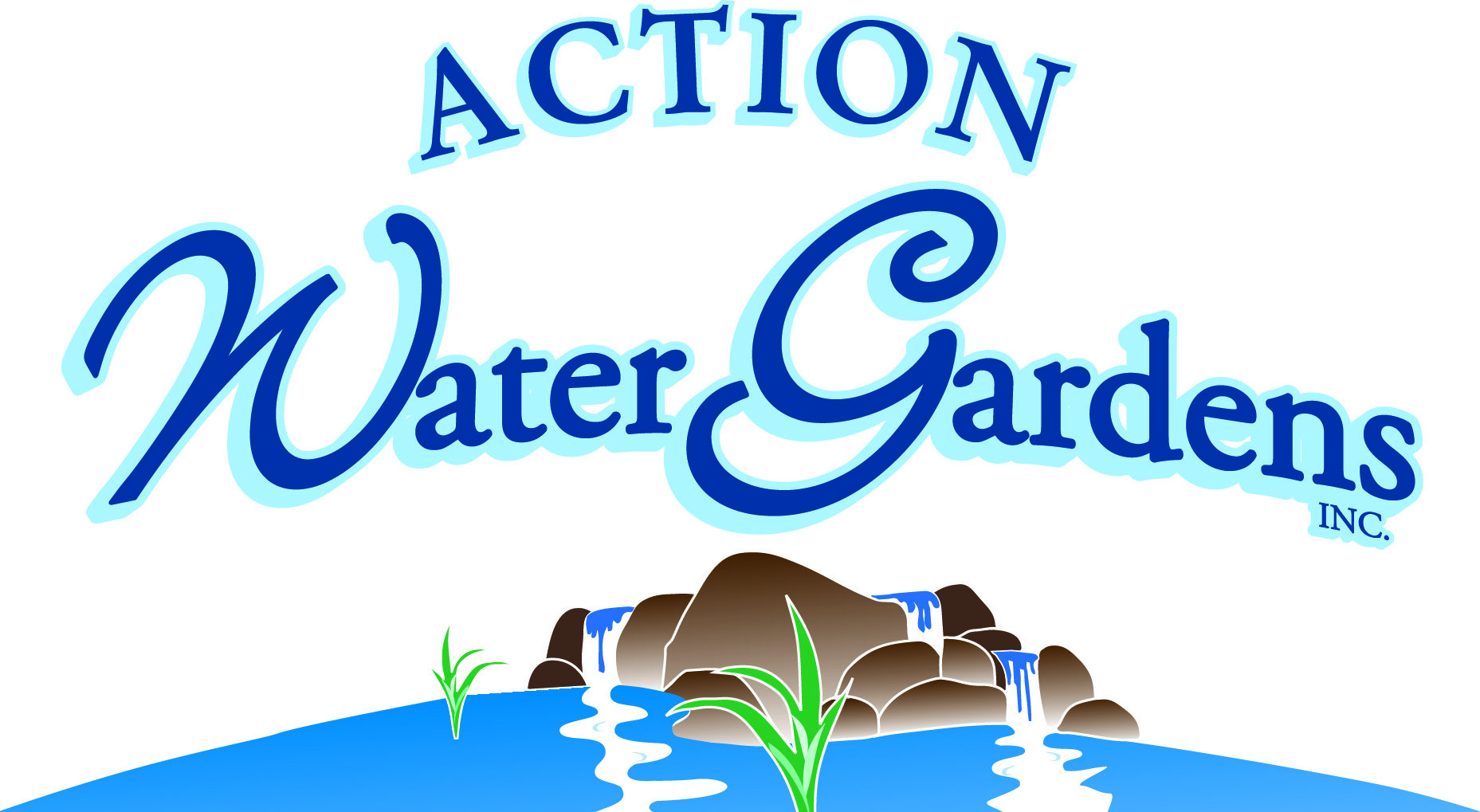Planting Tips
Plants are what make your water feature unique and stand out from the rest. Using plants can be a great way to add variety and depth to your pond, pondless waterfall, or fountain. They also provide shade, shelter, oxygen, and biological filtration – these are all key components to running a successful water feature.
The four main groups of plants that will transform your pond are: marginal, water lilies (deepwater), floaters, and submerged. It is recommended that you have a combination to maintain a balanced ecosystem in your pond. Keep in mind that you will want the plants to cover 30- 60% of the water gardens’ surface.
Marginal/Emergent plants typically grow along the edges/shallow “shelves” of the pond, and help blend the pond into the surrounding landscape. These plants typically grow in water 1-6” deep. Some examples are: cannas, chameleon plant, iris, and corkscrew rush. You can plant them directly into the gravel when you have a rock and gravel pond. If you have a preformed pond the plants can be placed in planting baskets around the shelves.
Planting instructions :
Choose where you would like to place your plant. You will want to keep both aesthetics and the plants’ lighting requirements in mind when choosing a location.
2. Move the gravel aside and make a small pocket.
3. If you plan on bringing any of the plants in for the winter (such as tropical plants with a hardiness zone above 7) then it would be best to leave them in their pots. Place the potted plant directly into the gravel pocket and cover it back up with stone.
4. If taking it out of the pot you will want to wash away any loose soil. Gently loosen up the roots without damaging them, and then place the plant in the gravel pocket. Cover the base of the plant with stone without covering areas of new growth.
Water Lilies (deepwater) are one of the most popular aquatic plants and make a great centerpiece for your water garden. Their beautiful blooms are real show-stoppers, and will blossom all season long. Lilies grow best when they are no less than 12-18” deep. This depth allows the leaves and flowers to grow to the surface of the water. Some smaller varieties can be planted in depths as shallow as 6”.
Planting Instructions:
Lilies have roots that need to be anchored in a lily pocket or lily pot. If you have purchased a lily that is already potted then all you need to do is submerge the plant to the correct depth. If you are planting a bare root rhizome then continue to the next step.
Fill a container (at least a few gallons. It will need space to grow!) with aquatic planting media, and make a small “well” at the edge of the pot.
Plant the rhizome in the “well” with the cut end against the side of the pot. Take care while doing this and avoid overcrowding the roots (make the “well” bigger if necessary).
Cover the rhizome with dirt, but do not bury the crown of the plant where the new growth/leaves pop out.
Add pea stone or small gravel to the top to lock everything into place. Add a little bit of water to the pot, but allow the potting media/soil to soak it up.
Once the pot is filled you can gently place the container into the pond.
Submerged plants (oxygenators) are plants that are grown completely under water. They add a great source of oxygen to the pond during the day and help combat algae. The planting instructions are pretty easy for submerged plants. These plants are usually anchored down to the bottom and are left there.
Floating plants float on the surface of the pond while their roots hang down into the water. These large root systems make them a great natural filter for the pond. Floating plants are usually of the tropical variety. Hyacinth and water lettuce are a few examples. Floaters are a good source of shade and help keep the water cool. Planting them is as easy as placing them in the pond!
Remember; don’t forget to fertilize your marginal plants and lilies to get an abundance of beautiful blooms. At Action we have pond plant fertilizer tabs that you can stick right into the potting media about once a month. If you have any other questions about aquatic plants feel free to stop on by the store or call us at (860) 875-2359.
